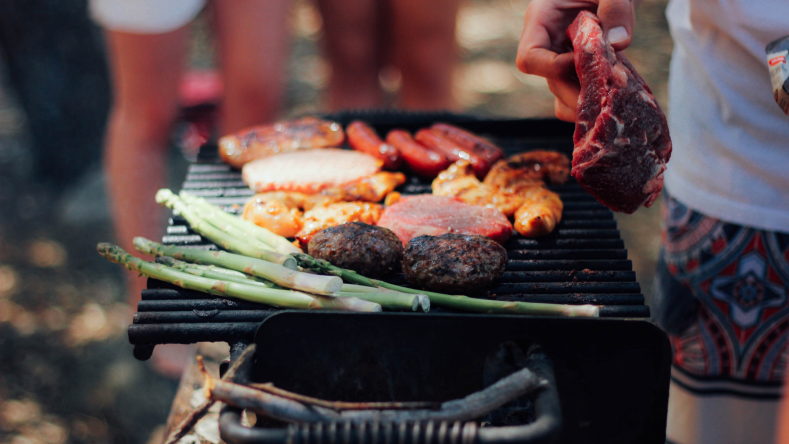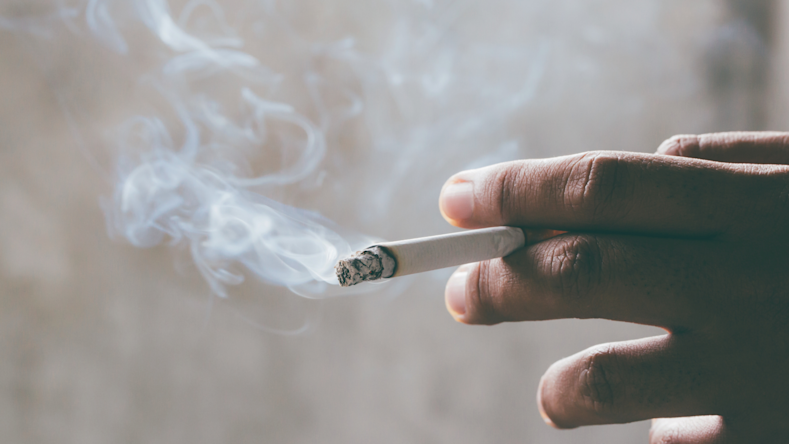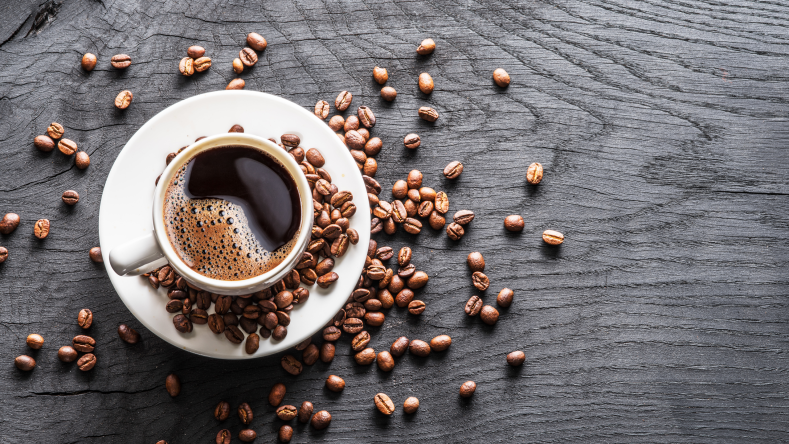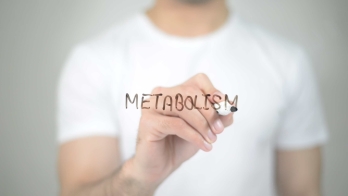Foods associated with increased cancer risk
Looking to prevent cancer? What you put on your fork might have an impact. From processed meats to dairy products, here are the top foods associated with increased cancer risk.

Cancer is one of the leading causes of death worldwide. While there are many factors involved for this complex disease, studies have shown that what you put on your fork could make a difference when it comes to prevention. Before diving into which foods are associated with an increased cancer risk, let’s first examine what is cancer and the known risk factors.
What causes cancer?
Cancer is a disease that is caused by mutations to the DNA within cells, which changes the way they function, grow, and divide. Cancer can form anywhere in your body, and there are many different types, with some forms being more dangerous than others.
The most common cancers are breast, liver, colorectal, and lung [ 29
Risk factors
Cancer is a complex disease, however, there are a number of risk factors that could contribute to your risk. Risk factors for cancer include:
Age: As you age, your body has a more difficult time eliminating damaged DNA cells, which can increase the amount of cancerous cells in your body [
26
].Family history: Your chances of getting cancer are higher if someone in your related family has previously been diagnosed.
Sun exposure: Excess sun exposure can lead to many different types of cancers (such as basal cell, squamous cell skin cancer, and/or melanoma).
Obesity: Studies have found that up to 20% of all cancer deaths are obesity related [
3
,
4
]. Excess body fat can lead to include long-lasting inflammation and elevated levels of insulin, insulin-like growth factor, and sex hormones, all of which can increase cancer risk [5
,6
].

Smoking: According to the CDC, those who smoke are 30 times more likely to get lung cancer than those who don’t smoke [
28
].Alcohol consumption: Chronic alcohol use (> 4 drinks/day for men or > 3 drinks/day for women) increases the chance for cancer due to DNA mutation, inflammation, and the formation of acetaldehyde [
18
,19
].HPV: More than 90% of anal and cervical cancers, 70% of vaginal and vulvar cancers, and 60% of penile cancers are caused by HPV [
30
].
Foods that increase cancer risk
Research shows that 30% of all cancer cases are linked to poor dietary habits [ 1 2 7
Refined carbohydrates
Foods that are processed and high in added sugars (such as sugar-sweetened beverages, white flour, and pasta) have been shown to increase the risk of cancer. These refined carbohydrates tend to spike insulin levels and raise blood glucose levels and are associated with chronic diseases such as diabetes, weight gain, and cancer. Insulin is linked to stimulating cell division and may support the growth of cancer, by increasing cell production and reducing cell death [ 9 10 11 6

Very hot beverages
Drinking a warm beverage can be comforting, but it can actually be a carcinogen if it’s too hot. Studies have suggested that drinks over 65 degrees C (such as coffee, tea, or other hot beverages) could lead to cancer of the esophagus, as they can cause significant burns [ 12 13
Processed meat
The methods used to make processed meat (such as salami, bacon, and hot dogs) have been shown to generate carcinogens [ 8 14 15
Fried and grilled foods
Eating charred meat has been linked with increased cancer risk. Dangerous compounds (such as heterocyclic amines (HCAs), PAHs, and acrylamide) are formed when beef, pork, fish, or poultry are fried or grilled over an open flame [ 16 17

Alcohol
While the occasional drink isn’t a cause for concern, the cumulative effects of drinking alcohol can take a toll on your health over time. Studies have found a correlation between chronic alcohol consumption and increased cancer risk. Alcohol increases DNA mutation, causes inflammation, and converts into acetaldehyde (a carcinogenic compound that increases the risk of liver, breast, pancreas, and colon cancers) [ 18 19
Learn more about how alcohol affects weight gain and inflammation here.
Top tips for preventing cancer
Incorporating simple diet and lifestyle changes into your routine can reduce your risk of cancer.
Eat a nutritious diet. Eating a well-rounded diet filled with fruits, vegetables, whole grains, fish, and green tea has been shown to reduce cancer risk [
25
]. These foods are filled with antioxidants, fiber, and phytochemicals which have cancer-fighting and health-promoting properties [20
,21
,22
,
23
,24
]. For instance, glucosinolates (sulfur-containing compounds found in cruciferous vegetables) decrease inflammation and have been associated with a lower risk of lung and colorectal cancer [27
].Maintain a healthy weight. Research suggests that maintaining a healthy weight might lower the risk of various types of cancer including breast, prostate, lung, colon and kidney cancer [
6
].

Be physically active. Staying active will not only help with weight maintenance, but it can also lower the risk of breast and colon cancers.
Avoid tobacco. Smoking, chewing tobacco, and secondhand smoke have been linked to various types of cancer (such as lung, mouth, throat, larynx, and pancreas), so, if necessary, seek support to quit.
Age-appropriate cancer screenings. Early detection is one of the best ways to beat cancer, so by participating in regular screening, you will have the best chance of detecting cancer in its early stages and hopefully stop the spread before it gets too far. Cervical cancer screenings can start as early as age 25, with breast and colon cancer screenings starting at age 40 and 45, respectively [
31
].
Summary
Cancer is a disease which is classified as uncontrolled growth of abnormal cells anywhere in your body. While risk factors (such as age, family history, and obesity) are used to help determine your chances of developing cancer, what you eat can also make a difference. A diet rich in processed foods,, and refined carbohydrates may increase your risk for developing cancer. Conversely, eating a well-balanced diet, maintaining a healthy weight, being physically active, and avoiding tobacco can help mitigate your cancer risk.
Disclaimer: The text, images, videos, and other media on this page are provided for informational purposes only and are not intended to treat, diagnose or replace personalized medical care.
Key takeaways
Cancer is a disease that is caused by mutations to the DNA within cells, which changes the way they function, grow, and divide.
Age, family history, sun exposure, and obesity are some common risk factors for cancer, but what you eat plays a role as well.
Studies have found that processed meat is associated with colorectal cancer, because of carcinogens created when treating the meat [
14
,15
].Eating a diverse and nutritious diet ensures that you’re getting the right amount of nutrients and may also help protect against some form of cancer.
References
Donaldson M. S. (2004). Nutrition and cancer: a review of the evidence for an anti-cancer diet. Nutrition journal, 3, 19.
https://doi.org/10.1186/1475-2891-3-19
Rinninella, E., Mele, M. C., Cintoni, M., Raoul, P., Ianiro, G., Salerno, L., Pozzo, C., Bria, E., Muscaritoli, M., Molfino, A., & Gasbarrini, A. (2020). The Facts about Food after Cancer Diagnosis: A Systematic Review of Prospective Cohort Studies. Nutrients, 12(8), 2345.
https://doi.org/10.3390/nu12082345
Renehan, A. G., & Soerjomataram, I. (2016). Obesity as an Avoidable Cause of Cancer (Attributable Risks). Recent results in cancer research. Fortschritte der Krebsforschung. Progres dans les recherches sur le cancer, 208, 243–256.
https://doi.org/10.1007/978-3-319-42542-9_13
Wolin, K. Y., Carson, K., & Colditz, G. A. (2010). Obesity and cancer. The oncologist, 15(6), 556–565.
https://doi.org/10.1634/theoncologist.2009-0285
Barazzoni, R., Gortan Cappellari, G., Ragni, M., & Nisoli, E. (2018). Insulin resistance in obesity: an overview of fundamental alterations. Eating and weight disorders : EWD, 23(2), 149–157.
https://doi.org/10.1007/s40519-018-0481-6
Park, J., Morley, T. S., Kim, M., Clegg, D. J., & Scherer, P. E. (2014). Obesity and cancer--mechanisms underlying tumour progression and recurrence. Nature reviews. Endocrinology, 10(8), 455–465.
https://doi.org/10.1038/nrendo.2014.94
O'Keefe S. J. (2016). Diet, microorganisms and their metabolites, and colon cancer. Nature reviews. Gastroenterology & hepatology, 13(12), 691–706.
https://doi.org/10.1038/nrgastro.2016.165
Mentella, M. C., Scaldaferri, F., Ricci, C., Gasbarrini, A., & Miggiano, G. (2019). Cancer and Mediterranean Diet: A Review. Nutrients, 11(9), 2059.
https://doi.org/10.3390/nu11092059
Vulcan, A., Manjer, J., & Ohlsson, B. (2017). High blood glucose levels are associated with higher risk of colon cancer in men: a cohort study. BMC cancer, 17(1), 842.
https://doi.org/10.1186/s12885-017-3874-4
Nagle, C. M., Olsen, C. M., Ibiebele, T. I., Spurdle, A. B., Webb, P. M., Astralian National Endometrial Cancer Study Group, & Astralian Ovarian Cancer Study Group (2013). Glycemic index, glycemic load and endometrial cancer risk: results from the Australian National Endometrial Cancer study and an updated systematic review and meta-analysis. European journal of nutrition, 52(2), 705–715.
https://doi.org/10.1007/s00394-012-0376-7
Rose, D. P., & Vona-Davis, L. (2012). The cellular and molecular mechanisms by which insulin influences breast cancer risk and progression. Endocrine-related cancer, 19(6), R225–R241.
https://doi.org/10.1530/ERC-12-0203
https://www.cancer.org/cancer/cancer-causes/general-info/known-and-probable-human-carcinogens.html
Islami, F., Boffetta, P., Ren, J. S., Pedoeim, L., Khatib, D., & Kamangar, F. (2009). High-temperature beverages and foods and esophageal cancer risk--a systematic review. International journal of cancer, 125(3), 491–524.
https://doi.org/10.1002/ijc.24445
Thanikachalam, K., & Khan, G. (2019). Colorectal Cancer and Nutrition. Nutrients, 11(1), 164.
https://doi.org/10.3390/nu11010164
Turesky R. J. (2018). Mechanistic Evidence for Red Meat and Processed Meat Intake and Cancer Risk: A Follow-up on the International Agency for Research on Cancer Evaluation of 2015. Chimia, 72(10), 718–724.
https://doi.org/10.2533/chimia.2018.718
Kumar, J., Das, S., & Teoh, S. L. (2018). Dietary Acrylamide and the Risks of Developing Cancer: Facts to Ponder. Frontiers in nutrition, 5, 14.
https://doi.org/10.3389/fnut.2018.00014
Key, T. J., Bradbury, K. E., Perez-Cornago, A., Sinha, R., Tsilidis, K. K., & Tsugane, S. (2020). Diet, nutrition, and cancer risk: what do we know and what is the way forward?. BMJ (Clinical research ed.), 368, m511.
https://doi.org/10.1136/bmj.m511
Ratna, A., & Mandrekar, P. (2017). Alcohol and Cancer: Mechanisms and Therapies. Biomolecules, 7(3), 61.
https://doi.org/10.3390/biom7030061
Strumylaite, L., Sharp, S., Kregzdyte, A., Poskiene, L., Bogusevicius, A., Pranys, D. (2015). The Association of Low-To-Moderate Alcohol Consumption with Breast Cancer Subtypes Defined by Hormone Receptor Status. Plos One. https://doi.org/10.1371/journal.pone.0144680
Vieira, A. R., Abar, L., Vingeliene, S., Chan, D. S., Aune, D., Navarro-Rosenblatt, D., Stevens, C., Greenwood, D., & Norat, T. (2016). Fruits, vegetables and lung cancer risk: a systematic review and meta-analysis. Annals of oncology : official journal of the European Society for Medical Oncology, 27(1), 81–96.
https://doi.org/10.1093/annonc/mdv381
Turati, F., Rossi, M., Pelucchi, C., Levi, F., & La Vecchia, C. (2015). Fruit and vegetables and cancer risk: a review of southern European studies. The British journal of nutrition, 113 Suppl 2, S102–S110.
https://doi.org/10.1017/S0007114515000148
Chen, J., Song, Y., & Zhang, L. (2013). Lycopene/tomato consumption and the risk of prostate cancer: a systematic review and meta-analysis of prospective studies. Journal of nutritional science and vitaminology, 59(3), 213–223.
https://doi.org/10.3177/jnsv.59.213
Gaesser G. A. (2020). Whole Grains, Refined Grains, and Cancer Risk: A Systematic Review of Meta-Analyses of Observational Studies. Nutrients, 12(12), 3756.
https://doi.org/10.3390/nu12123756
Yu, X. F., Zou, J., & Dong, J. (2014). Fish consumption and risk of gastrointestinal cancers: a meta-analysis of cohort studies. World journal of gastroenterology, 20(41), 15398–15412.
https://doi.org/10.3748/wjg.v20.i41.15398
WHO. (2020). Healthy diet. World Health Organization
https://www.who.int/en/news-room/fact-sheets/detail/healthy-diet
.White, M. C., Holman, D. M., Boehm, J. E., Peipins, L. A., Grossman, M., & Henley, S. J. (2014). Age and cancer risk: a potentially modifiable relationship. American journal of preventive medicine, 46(3 Suppl 1), S7–S15.
https://doi.org/10.1016/j.amepre.2013.10.029
Higdon, J. V., Delage, B., Williams, D. E., & Dashwood, R. H. (2007). Cruciferous vegetables and human cancer risk: epidemiologic evidence and mechanistic basis. Pharmacological research, 55(3), 224–236.
https://doi.org/10.1016/j.phrs.2007.01.009
Centers for Disease Control and Prevention. (2021, October 18). What are the risk factors for lung cancer? Centers for Disease Control and Prevention. Retrieved November 15, 2021, from
https://www.cdc.gov/cancer/lung/basic_info/risk_factors.htm
.World Health Organization. (n.d.). Cancer. World Health Organization. Retrieved November 15, 2021, from
https://www.who.int/news-room/fact-sheets/detail/cancer
.Centers for Disease Control and Prevention. (2020, September 3). Cancers associated with human papillomavirus (HPV). Centers for Disease Control and Prevention. Retrieved November 15, 2021, from
https://www.cdc.gov/cancer/hpv/basic_info/cancers.htm
.Cancer screening guidelines by age. American Cancer Society. (n.d.). Retrieved November 15, 2021, from
https://www.cancer.org/healthy/find-cancer-early/screening-recommendations-by-age
.







